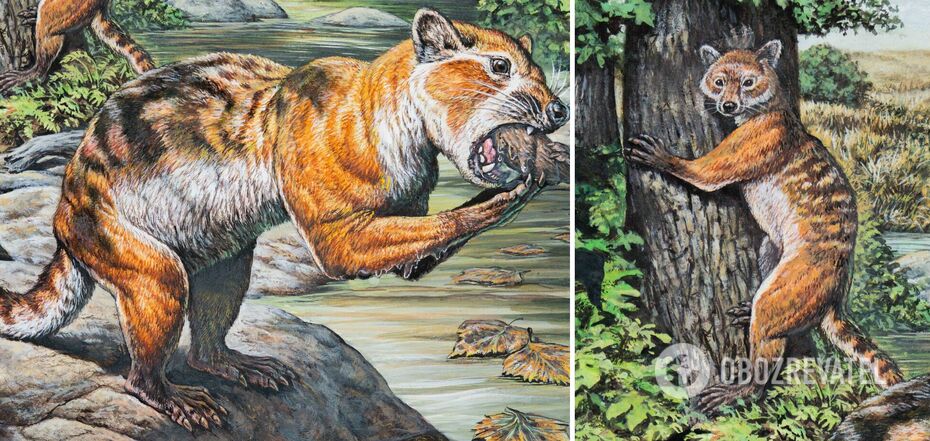Life
Skeleton of amazing otter-bear-cat collected for the first time after decades of research
Scientists have managed for the first time to reproduce the skeleton of an amazing animal that paleontologists have named Eoarctos vorax. It is one of the oldest relatives of bears, which was far from what its contemporaries look like.
Scientists told the Journal of Vertebrae Paleontology about the study, which has been ongoing since the 1940s. Among the scientific community, the strange beast is half-jokingly referred to as a cat-otter-bear.
The fossil mammal, whose jaws were discovered back in the 1940s, has given scientists an insight into how a group including skunks, raccoons, bears and even seals originated about 32 million years ago.
However, the mystery of the eoarctos itself has taken scientists almost 80 years to unravel. Fossils of the bizarre jaws of a predatory mammal of unknown species were first discovered by paleontologists at Fitterer Ranch in North Dakota, USA. But other parts of the skeleton could not be found for the next decades. It wasn't until 1982 that a team led by paleontologist Robert Emry found a nearly complete skeleton of the raptor.
Together with the paleontologist Richard Tedford, they were able to determine that the animal belonged to the group of bears (or arctoidea). It was not possible to advance further in the study, because Tedford passed away in 2011. But his work was continued by Emry, North Dakota Geological Survey paleontologist Clint Boyd and their colleagues.
The nearly complete skeleton of a male Eoarctos, which included a penis bone to determine the sex of the animal, became a kind of paleontological puzzle that made it possible to recognize other fossils of the same species.
Lars Werdelin, a paleontologist at the Swedish Museum of Natural History who was not involved in the new study, said that until now, the ancient Arctoidea had been so poorly studied that Eoarctos provides one of the first detailed views of how this family of mammals moved and behaved in the ancient landscape.
After scientists were able to assemble a complete skeleton, it turned out that Eoarctos did not look too much like any of the existing mammals. As National Geographic tells us, it turned out to be similar in size to a raccoon, had claws like those of a cat, which allowed it to climb trees, and also ate shellfish that lived in shells.
"We've given it the internal working name of 'cat otter bear.' (It's) a stranger beast than paleontologists expected when the first jaw fragments began to appear from the rock," Boyd said.
He also said that scientists previously knew little about what early arctoideans were doing. Rather than being runners like the first dogs, these animals were probably more prone to climbing. At least the proportions of their bodies attest to this.
Scientists speculate that the raptor fed on the ground, but could easily run into a tree if it felt threatened by a larger predator.
Although scientists have even managed to unravel the animal's behavior, they are still puzzling over its jaw.
The first jaw that was discovered had an injury that caused the animal to lose several of its lower cheek teeth. But it later turned out that this was not an anomaly or an accident, as similar damage was found on other jaws. So, the scientists believe, the animals were doing something that broke their teeth.
"The missing teeth and bone infections were very surprising. If it had been a single specimen, I would have shrugged my shoulders and said we found a unique specimen. But with such an abundance of specimens and such a widespread infection with signs of healing, it was obviously a regular occurrence with these animals," Boyd noted.
Scientists speculate that these animals liked to feast on large snails, which were quite tough. But to confirm this theory, they need to identify the fossilized feces of eoarctos.
Previously OBOZREVATEL also told about the fact that scientists have learned what creatures first appeared on Earth.
Subscribe to OBOZREVATEL channels in Telegram and Viber to keep up with the latest news.





























